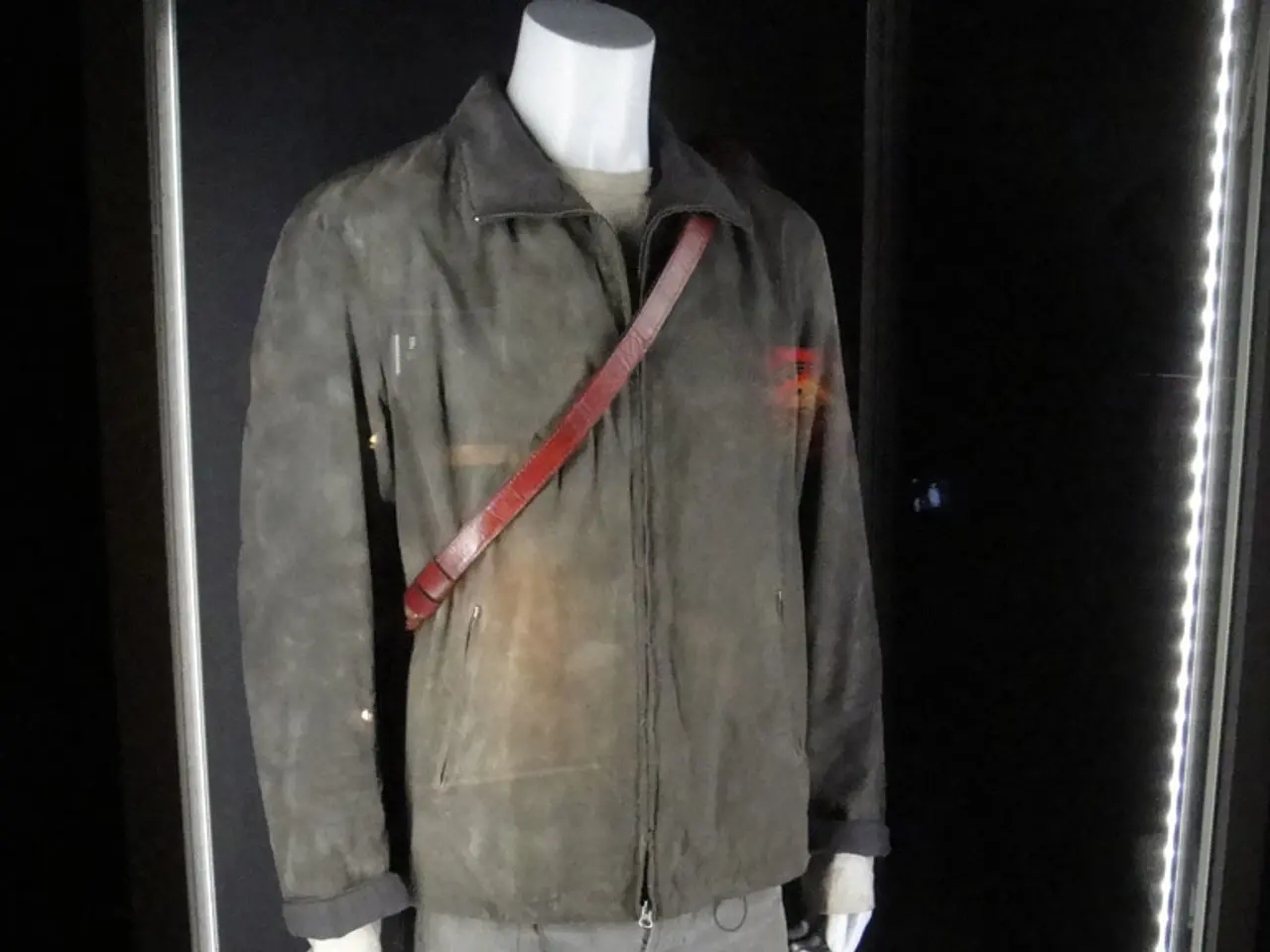Clothing Choices of Men Not Suitable for adolescent males
In the 1800s to the mid-1900s, a clear distinction existed between boys' and men's clothing in Western societies. Boys' attire was looser, brighter, and more practical, symbolizing youth and a lack of adult responsibility, while men's clothing was more tailored, sober, and conveyed dignity and maturity [1][5]. However, this distinction began to fade in the 1960s due to cultural shifts and changes in fashion norms.
The counterculture movement rejected traditional values, including conservative dress codes, embracing more casual, colorful, and less formal styles for all males, regardless of age. Fashion became less about rigid social signaling and more about personal expression and comfort [1][2]. Younger men adopted looks that borrowed elements from boyswear, such as jeans, colorful shirts, polo necks, and casual jackets. The introduction of lighter, more body-conscious fabrics in menswear made suits different but also more approachable. Jeans and casual clothing like workman's jackets or even Mao jackets became widespread across ages [2].
The greater unisex approach in fashion and the fading significance of strict gender and age markers in clothing further blurred the lines between boyswear and menswear [2]. The historical functional and symbolic reasons for distinguishing boys' and men's clothes—signaling growth, responsibility, and social status—gradually faded as societal norms around adulthood, identity, and dress changed in the mid-20th century [1][2].
The author argues that this erosion of the distinction between boys' and men's clothing may have implications for self-perception, behavior, and how others treat men. For instance, people might take men less seriously when they dress casually or indistinguishably from children [3]. In a society where men never stop dressing like they did in high school, they may lack the confidence to step into leadership roles [4].
Public trust in the institutions men are supposed to represent may also erode when men don't look like leaders [6]. Conversely, teaching assistants earn more authority points with students when wearing a tie [7]. Job interview studies show that applicants in adult-coded attire score higher on perceived competence than equally qualified peers in casual gear [8].
Research shows that clothing impacts self-esteem, confidence, and mood, with people wearing formal or professional attire reporting feeling more competent and authoritative [9]. The author makes a reference to Clint Eastwood's character in the movie "Gran Torino" expressing disapproval at the sight of grown men dressing like boys [3].
In contemporary times, it is common to see men in their 30s and 40s at airports shuffling toward TSA in elastic-waist joggers, video game t-shirts, and Crocs, with their children wearing similar outfits [10]. In American restaurants, 30- and 40-something men often dress like their pre-teen or teenage sons, wearing Air Jordans, graphic tees, and oversized flat-brimmed ballcaps [11].
The author's 14-year-old son also notices the poor state of American grown-man style and comments on it [11]. Sociologists note that rites of passage serve both the initiate and the tribe, and their disappearance causes both parties to drift [12].
In conclusion, the erosion of the distinction between boys' and men's clothing may have significant implications for self-perception, behavior, and societal dynamics. Understanding this historical shift in fashion norms can provide valuable insights into contemporary issues surrounding masculinity, leadership, and personal identity.
References: 1. The Evolution of Men's Clothing: From the 1800s to the 1940s 2. Why Men's Fashion Stopped Evolving in the 1960s 3. The Impact of Clothing on Perceptions of Men 4. The Role of Clothing in Self-Perception and Behavior 5. The Psychology of Dressing for Success 6. The Importance of Dressing Like a Leader 7. The Power of a Tie: How Dress Affects Perception 8. Job Interviews: The Role of Clothing in Perceived Competence 9. The Effect of Clothing on Self-Esteem and Mood 10. The Decline of Men's Fashion: A Look at Airports 11. The State of American Grown-Man Style 12. Rites of Passage: Their Significance and Disappearance
- The historical distinction between boys' and men's clothing in Western societies, signifying growth, responsibility, and social status, has gradually faded due to changes in fashion norms and cultural shifts.
- In the mid-1960s, many fashion elements from boyswear were adopted by younger men, including jeans, colorful shirts, polo necks, and casual jackets, blurring the lines between boyswear and menswear.
- The author argues that the erosion of this distinction may have implications for self-perception, behavior, and societal dynamics, as people might perceive men less seriously when they dress casually or indistinguishably from children.
- Clothing influences self-esteem, confidence, and mood, with people wearing formal or professional attire reporting higher levels of competence and authority.
- In contemporary society, there is a lack of distinction in dressing styles among men and boys, with some men wearing casual clothing such as elastic-waist joggers, video game t-shirts, and Crocs, similar to their children.
- Sociologists argue that rites of passage serve both the initiate and the tribe, and their disappearance can cause both parties to drift, suggesting that the erosion of clear boundaries between boys' and men's clothing may cause similar issues.
- Research suggests that understanding the historical shift in fashion norms can provide valuable insights into contemporary issues surrounding masculinity, leadership, and personal identity.
- The author's son commented on the poor state of American grown-man style, highlighting the importance of addressing this issue to promote positive self-perception and proper role modeling for future generations.




